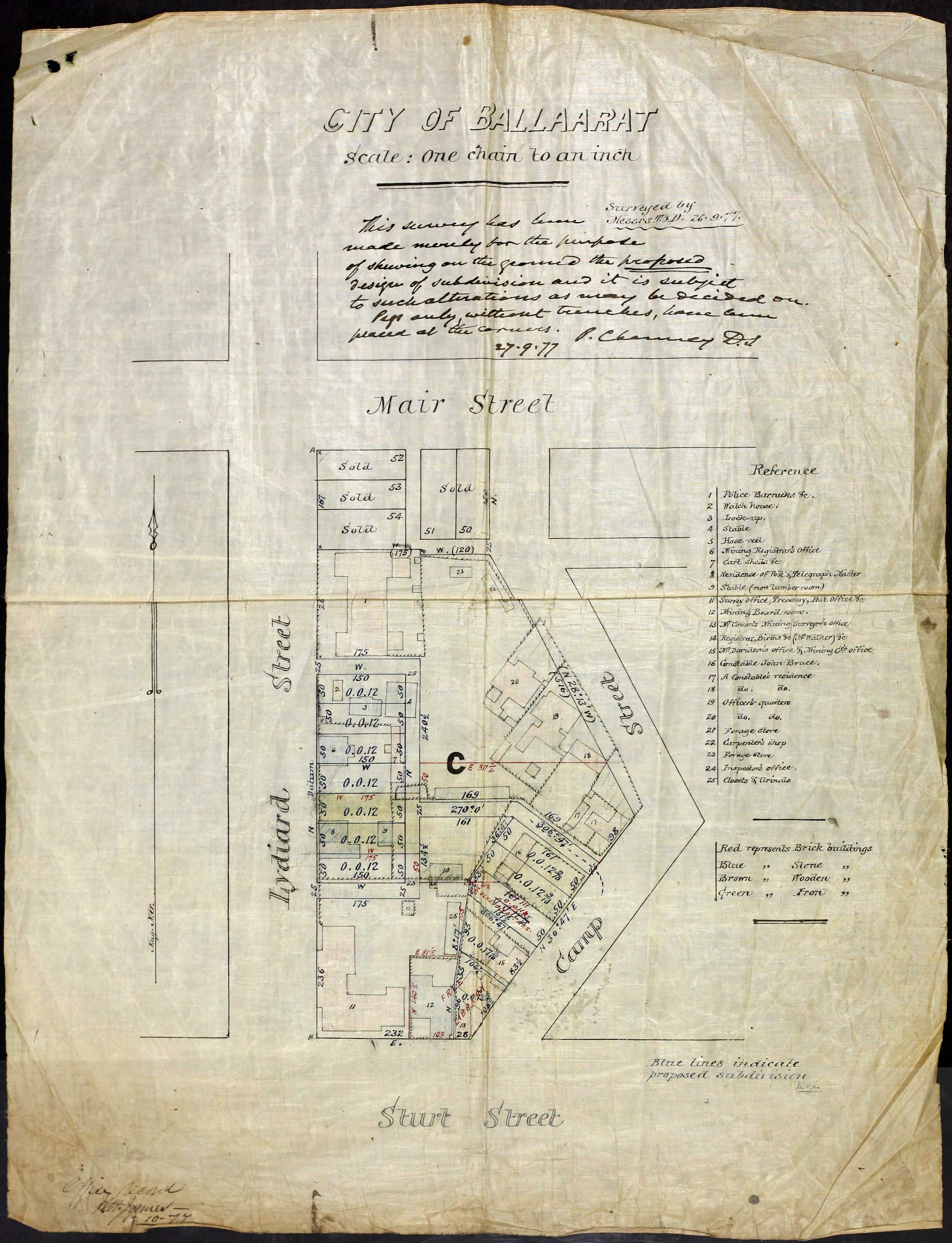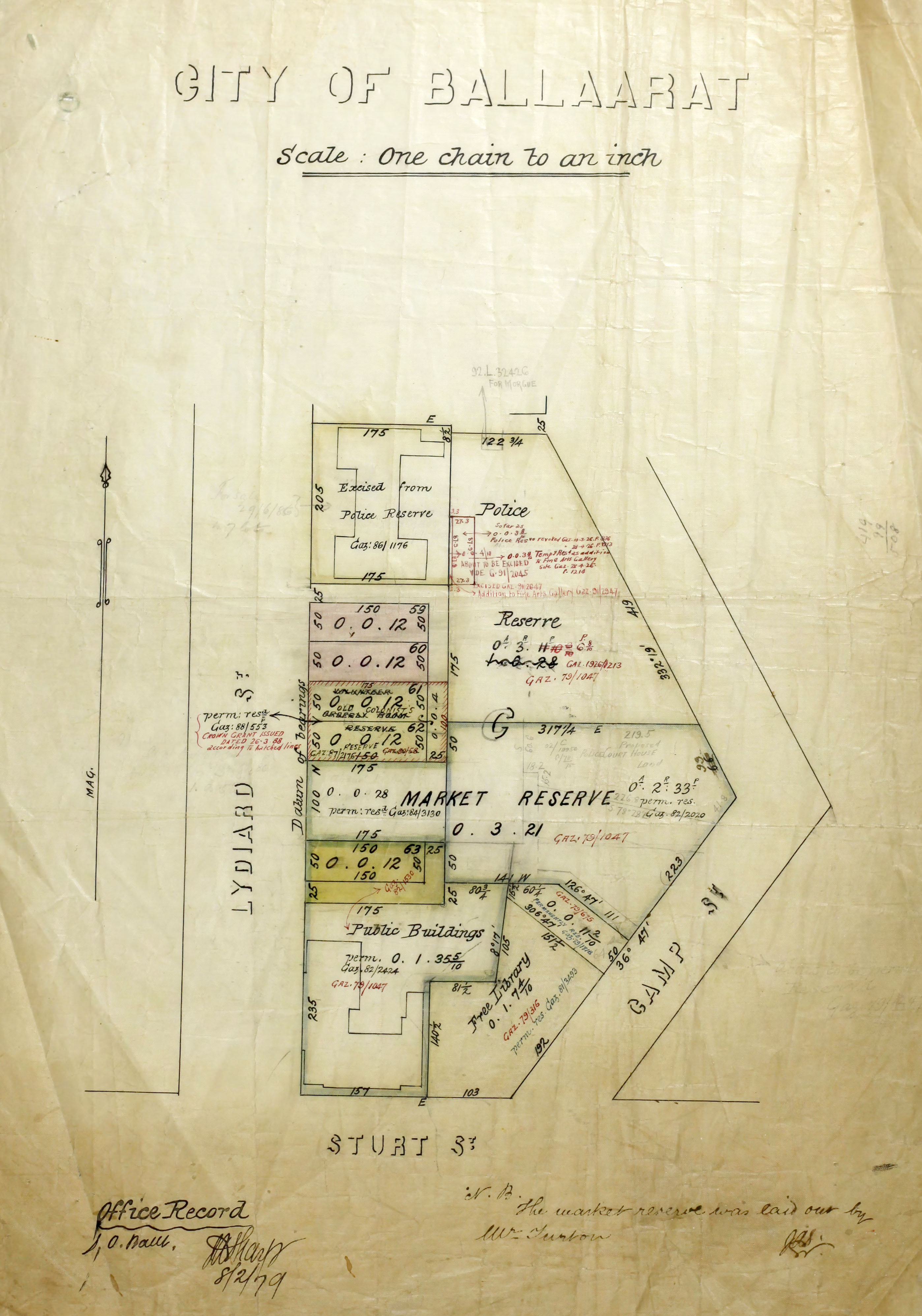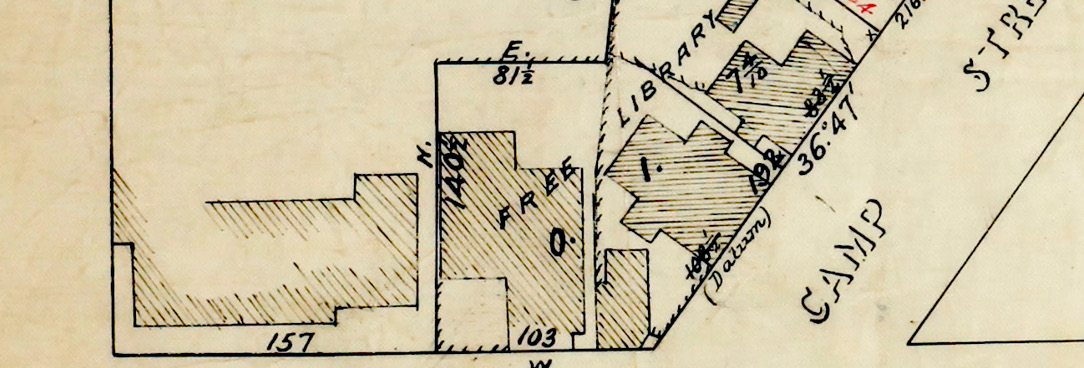Author: Elizabeth Denny
You can now find more than 400 maps of Ballarat online.
Ranging from the 1850s to the early twentieth century, among the collection you’ll find four nineteenth century plans of Camp Street providing a snapshot of the growth of Ballarat.

PROV, VPRS 4771/P2 Ballarat and Ballarat East Town Allotment Survey Plans, Unit 211, City of Ballaarat Mair Lydiard Sturt and Camp Streets 1877.
Camp Street, Ballarat
Some of the most influential political and social movements from the 1850s gold rush to the early nineteenth century were debated and promoted in Camp Street, among them Australian unionism, Federalism, and the anti-conscription campaign of the First World War.
With its proud history and significant buildings, Camp Street is perhaps the most beautiful street in Ballarat - described by author and historian Anne Beggs Sunter as a cultural powerhouse of both Ballarat and Australia in her book Camp Street, Ballarat from Eureka to Federation.
The street is now an active arts precinct used by the Art Gallery of Ballarat and the Camp Street Campus of Federation University’s Arts Academy.
Camp Street’s development
Three more maps in VPRS 4771 show Camp Street’s development over a decade.

ReserveBenAsComm CampSt 1878PROV, VPRS 4771/P2 Unit 217, Reserve Benevolent Asylum Committee 1878.

PROV, VPRS 4771/P2 Unit 229B, Township of Ballarat, Lydiard, Sturt and Camp Streets, 1879. 
PROV, VPRS 4771/P2 Unit 263b, Township of Ballarat, Camp, Sturt and Grenville Streets, 1887.
You can find nineteenth century photographs of these sections of Camp Street contrasted with current streetscapes in Ballarat Revealed on the City of Ballarat’s Historic Urban Landscape website.
Searching VPRS 4771
These maps can be searched by browsing the list in the P2 consignment of the series.
Note that there are more digital images than there are physical units. This is because some physical units contain several discrete plans on one sheet. These have been created as individual items, but can only be ordered as units.
These digitised maps come thanks to the hard work and dedication of our wonderful volunteers.
Material in the Public Record Office Victoria archival collection contains words and descriptions that reflect attitudes and government policies at different times which may be insensitive and upsetting
Aboriginal and Torres Strait Islander Peoples should be aware the collection and website may contain images, voices and names of deceased persons.
PROV provides advice to researchers wishing to access, publish or re-use records about Aboriginal Peoples
